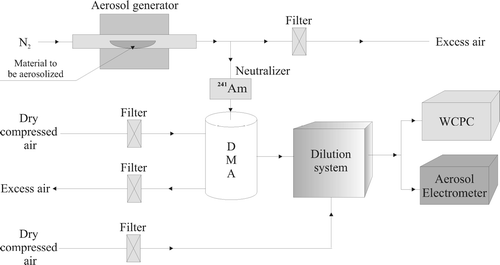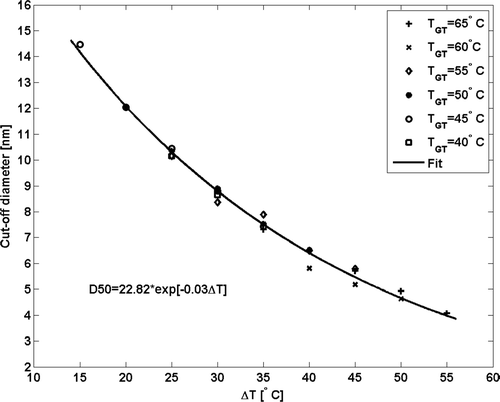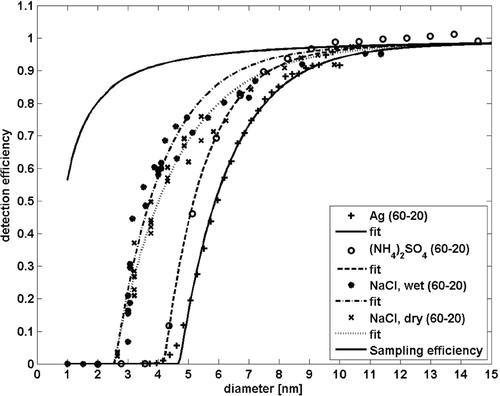Figures & data
FIG. 1 Experimental setup, which was used to determine the detection efficiency of a TSI 3785 water condensation particle counter (WCPC).

FIG. 2 The effect of temperature difference in the detection efficiency of the CPC TSI model 3785 WCPC for silver particles (a) using a constant growth tube temperature (50°C) and varying the saturator temperature (10, 15, 20, 25, and 30°C, squares, diamonds, asterisks, circles, and pluses, respectively), (b) using a constant saturator temperature of 15°C and varying the growth tube temperature (65, 60, 55, 50, 45, and 40°C, crosses, squares, diamonds, asterisks, circles, and pluses, respectively). Continuous lines present a fit through experimental points. As the temperature difference increases, the cut-off diameter decreases.

FIG. 3 The detection efficiency of a TSI model 3785 CPC as a function of temperature difference between the saturator and the growth tube for silver particles. Higher temperature difference leads to higher supersaturation inside the growth tube. As a result, heterogeneous nucleation onto initially smaller particles is initiated and they are successfully counted with the optics of the instrument. Continuous line represents a least squares fit through the experimental points.

FIG. 4 The detection efficiencies for particles of different chemical composition for TSI model 3785 CPC. For a normal operation conditions (dT = 20–60°C), the effect of chemical composition to cut-off size is 1 nm, but for a smaller temperature difference, the cut-off depends more crucially on the chemical composition and in particular, water solubility, of the sampled aerosol particles.
